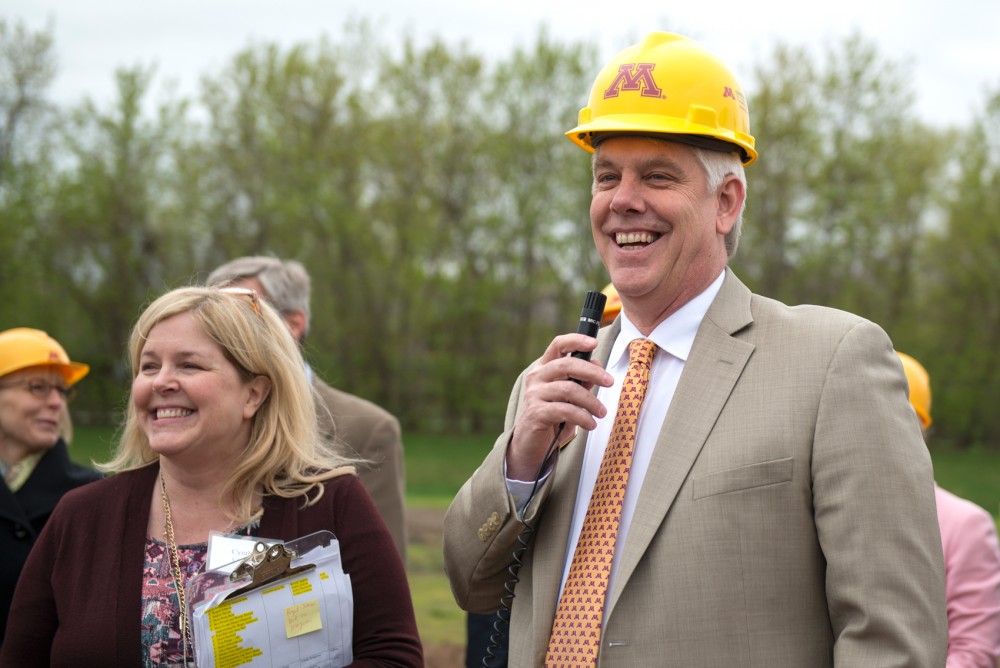Millions of scientific pieces are one step closer to being pulled from storage and put on display at a revamped University of Minnesota museum.
University leaders officially broke ground on the new site of the Bell Museum of Natural History Friday, with the building’s construction planned to end in 2018.
Beverly Anglum, the museum’s advancement director, said the larger space will allow curators to show exhibits they previously kept in storage.
“We have four million scientific specimens which are now housed on the St. Paul campus. The new facility will let us really display those,” Anglum said.
The $64 million facility will use rain irrigation and feature amenities such as a planetarium and beehives.
A smaller-scale project was originally planned for the site at Cleveland Avenue North and Larpenteur Avenue West in Falcon Heights until museum leaders secured $7 million in additional state funding this summer.
The Bell’s previous building had no air conditioning, which raised problems for more sensitive pieces, said Steven Lott, museum chief operating officer.
“Being able to take care of [specimens] and put them in a new space, that’s a big deal. … The air conditioning, the heating system … aren’t the bells and whistles, but it’s the ones that are really going to matter,” Lott said.
Anglum said museum leaders plan for the new building to honor the museum’s strong tradition of conservation, even down to its construction.
The parking lot for the building will capture 90 percent of rainwater to water the grass, Lott said, which means the building will require less maintenance.
Anglum said she expects the new building to double the number of visitors per year, and student job and research opportunities will also increase.
George Weiblen, Bell’s interim science director, said the museum’s leadership wants visitors to learn from and participate in research, art or culture studies based on exhibits.
“We’re all about inspiring wonder in the Earth and our universe, and that extends to the kinds of work University faculty has going on,” Weiblen said.
Lott said the building’s plans include a public planetarium, which the Twin Cities hasn’t had for seven years.
Weiblen said the planetarium will also use new software to make more interesting presentations. He said new shows will use unique software programs, which could let the planetarium show visitors new locations, like inside the human body or around the world.
“You can imagine the guide asking somebody in the audience, ‘Where would you like to go today?’ and then you travel there,” Weiblen said.


